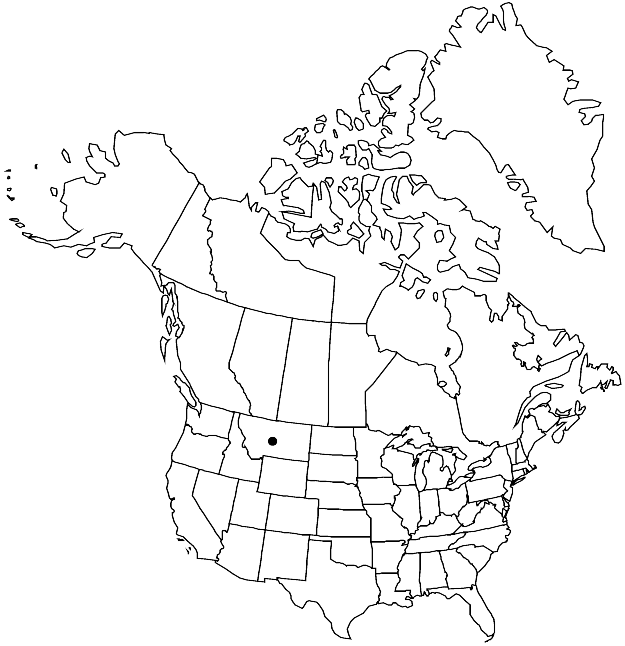Drepanocladus cardotii
Bryologist 100: 82. 1997.
Plants small. Stems irregularly and often sparsely branched. Stem-leaves falcate or in some shoots subsquarrose, cordate or broadly ovate, suddenly narrowed to apex, concave, 1–1.4 × 0.7–0.8 mm; base erectopatent to spreading, narrowly decurrent 1/4–3/4 distance to leaf below, insertion slightly curved; margins finely denticulate or sometimes with larger parts entire; apex acuminate, acumen sharply differentiated, furrowed; costa usually 2-fid just beyond base, occasionally with 3 or 4 branches, ending well before mid leaf; alar region transversely triangular, reaching from margin 66–80% distance to costa; ratio of medial laminal cell length (µm) to leaf length (mm) 23.6. Sexual condition unknown.
Habitat: Habitat unknown
Elevation: high elevations (2000 m)
Discussion
Drepanocladus cardotii is recognized by the small size, Campylium-like appearance, and long-decurrent leaves. This species is only known from the type collection, Avalanche Basin in Glacier Park, and the exact habitat is unknown. The leaf acumina are 0.6–1 times the basal leaf length.
Selected References
None.
Lower Taxa
"narrower" is not a number.
